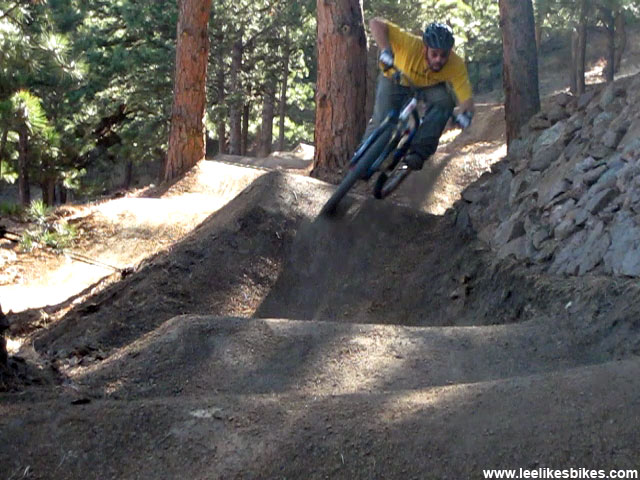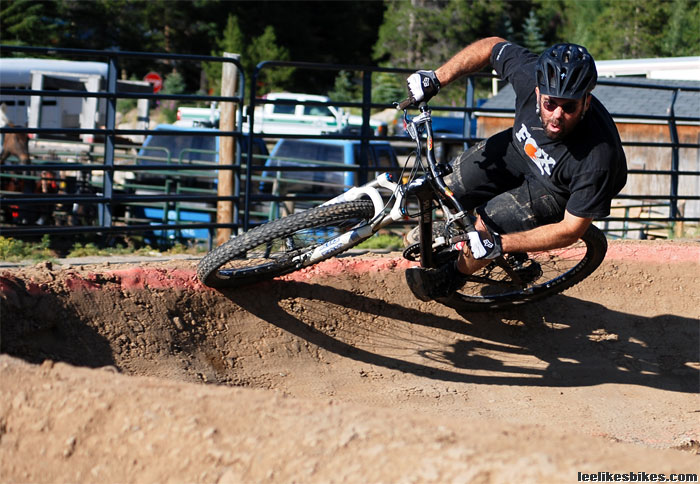Non-standard berm ideas

A purchaser of Welcome to Pump Track Nation is thinking outside the box.
Some thoughts:
Hi, Lee!!
We just ordered your Pump Track nation book in PDF format. I am trying to make a “pretty” landscaped pump track, similar to the concepts used in this track: http://www.ihatebikes.net/site/pump-tracks/backyard-spotlight-john-and-maggies-pump-track/
I will be building up a retaining wall at the backside of the berms … I expect to use the 10′ radius dimension to the centerline of the track … and allow for a 3- to 4-foot-wide track.
My question is:
Does the entire berm need to be built up of dirt only? Can the portion of berm that is up against the retaining wall have rock/gravel fill (see blue on diagram below) – to act as a “French Drain” at the base of the retaining wall? The snip below shows what I am thinking …
 |
I’ve even considered making one of the berms with a sloped wooden component — so that we can get higher on the berm as our skills progress … similar to this photo:
 |
Lots of ideas swirling around, and I am heeding your advice of building it RIGHT the first time!! J I guess I just want to verify that my ideas are on the right track (gosh, there has to be a pun here!). I’m sure we’ll figure a lot out as we start building, but I just want to make sure that we are building a good foundation.
Thanks so much!
Denise
Hey Denise,
Thanks for buying Welcome to Pump Track Nation, and thanks for your note.
I’m a pump track purist (all dirt, all round shapes), but I like your thinking. Some thoughts of my own:
• You can bury rocks in your berms, but make sure they’re so deep they don’t affect the stability of the surface.
• If they’re that deep I’m not sure how much they’ll aid drainage.
• Right now at Valmont Bike Park they’re working on something similar (to get water out of the inside of a berm, which is a low spot), but it’s not done yet and I don’t know how it’s going to work out.
 I am still stoked on my pump track. Check out the retaining wall. The guts of the berms are also made of endemic rocks. |
• Drainage is an exercise in cleverness. Think about the entire site as a 3D object. Consider elevating the insides of your berms then pushing water out the low spot between rollers.
 Kidtopia. The inside of the 180 is built up so it drains between the rollers. |
• Burying rocks deep in your features can save you money on good dirt. We do that sort of thing a lot. Other useful objects include anvils, toilet bowls and anchors.
• You can certainly incorporate a wall ride. That’s not my style — I prefer hurling my carcass into 70-degree banks of filtered topsoil — but kids these days seem to enjoy them.
 Wall rides? We don’t need no stinking wall rides. The pump track I built for Giant Bicycles at Keystone, CO. |
• Be mindful of the transition between the dirt and the wood. At Valmont the transitions keep wearing away, and there’s a rough bump as you hit wood.
As always:
Measure twice. Dig once!
Lee
Know more. Have more fun!
Join the leelikesbikes mailing list:

Comments are closed.